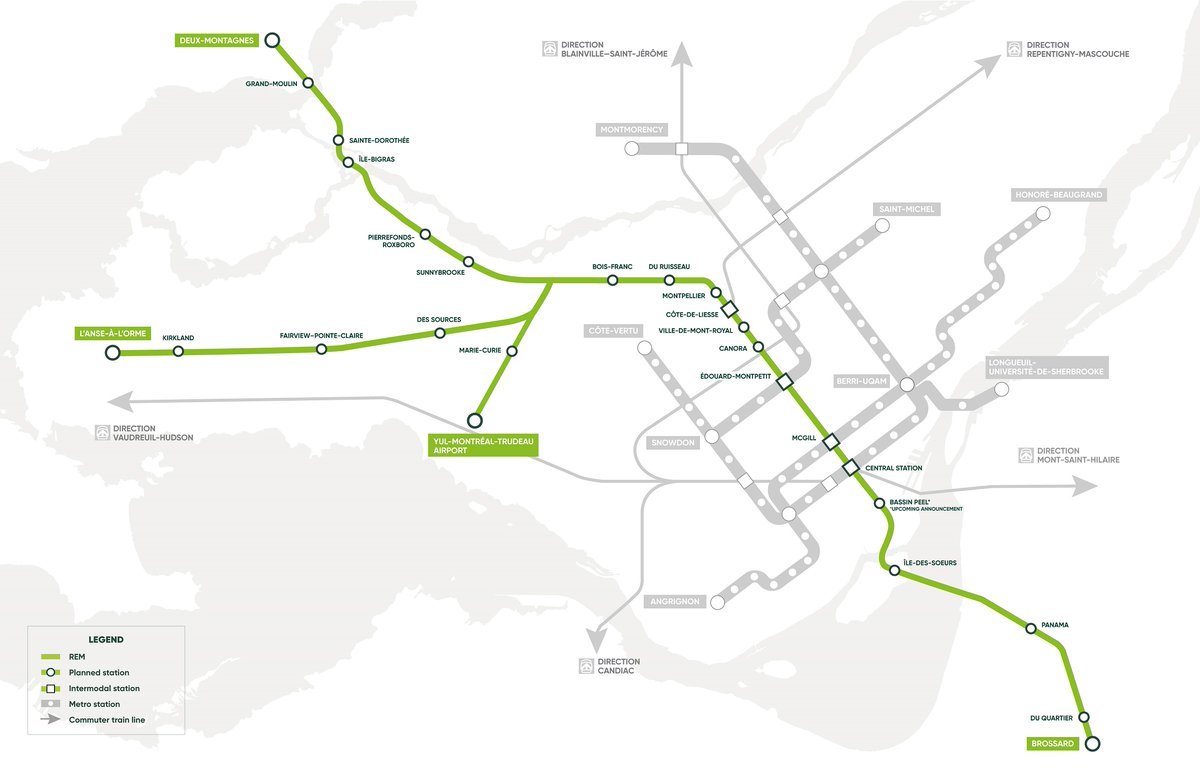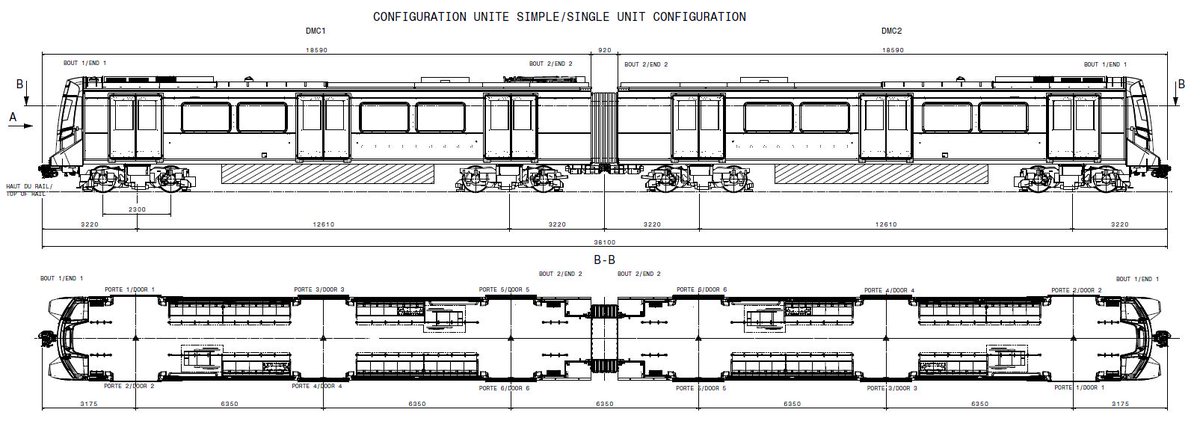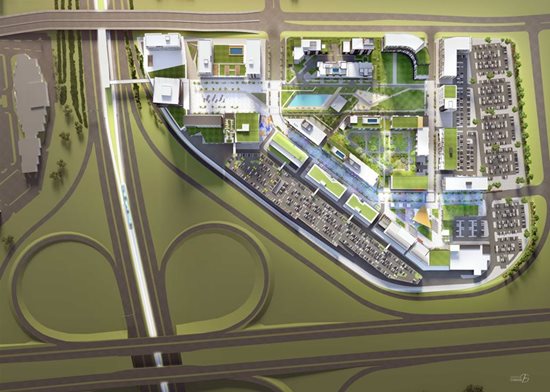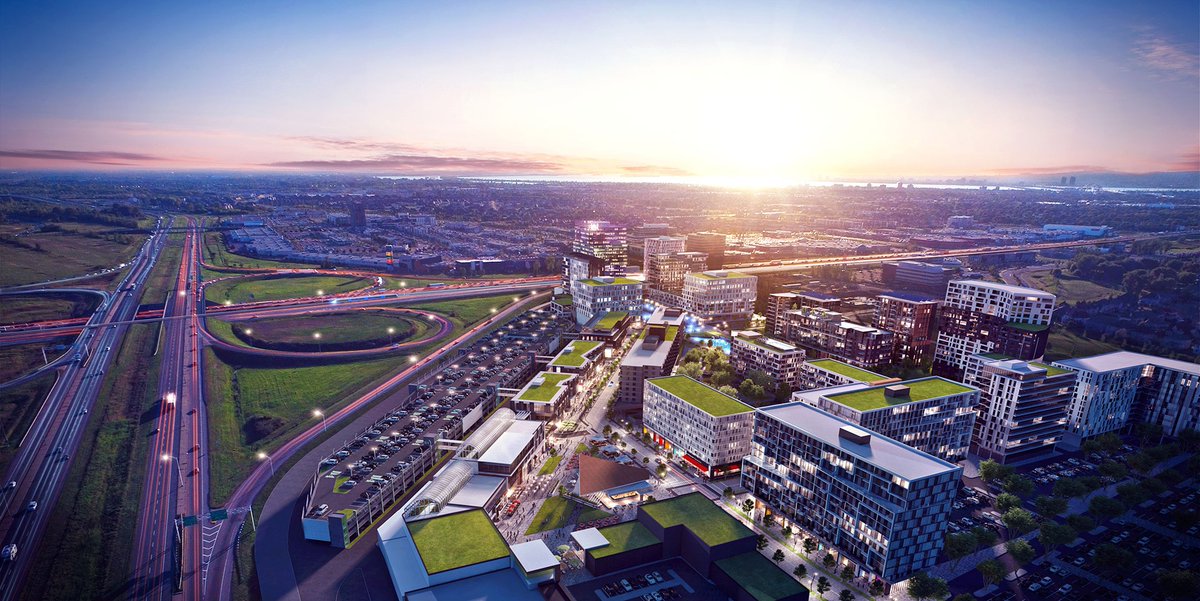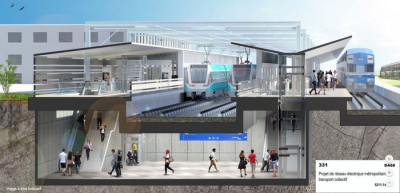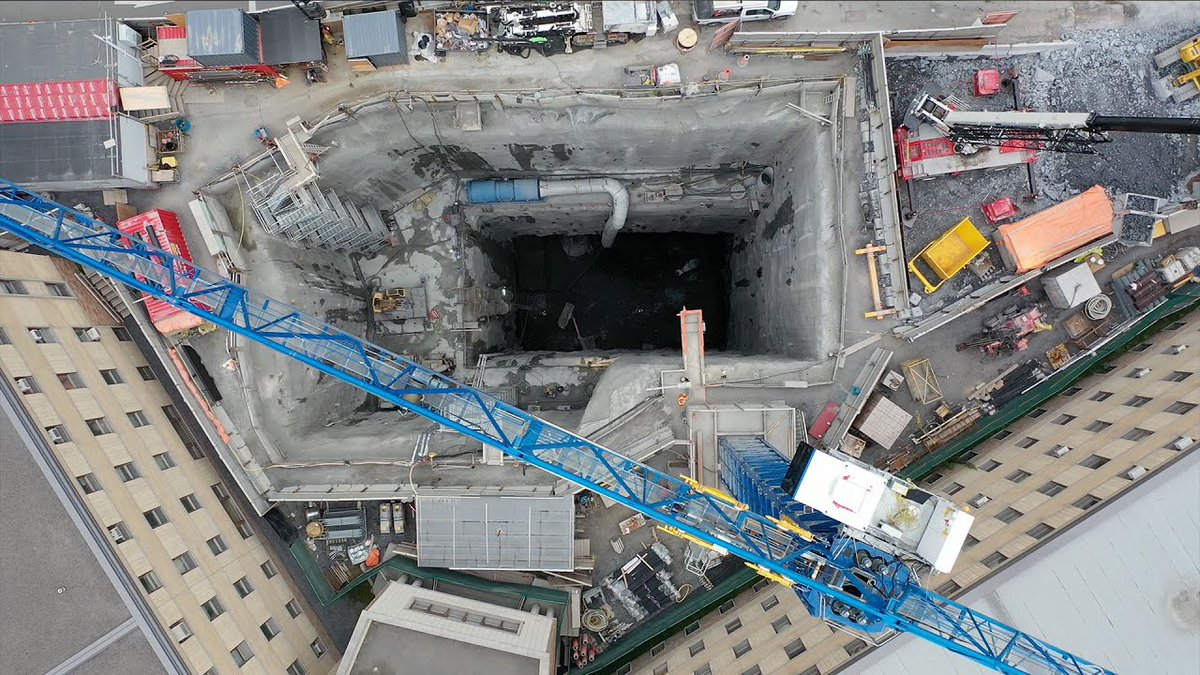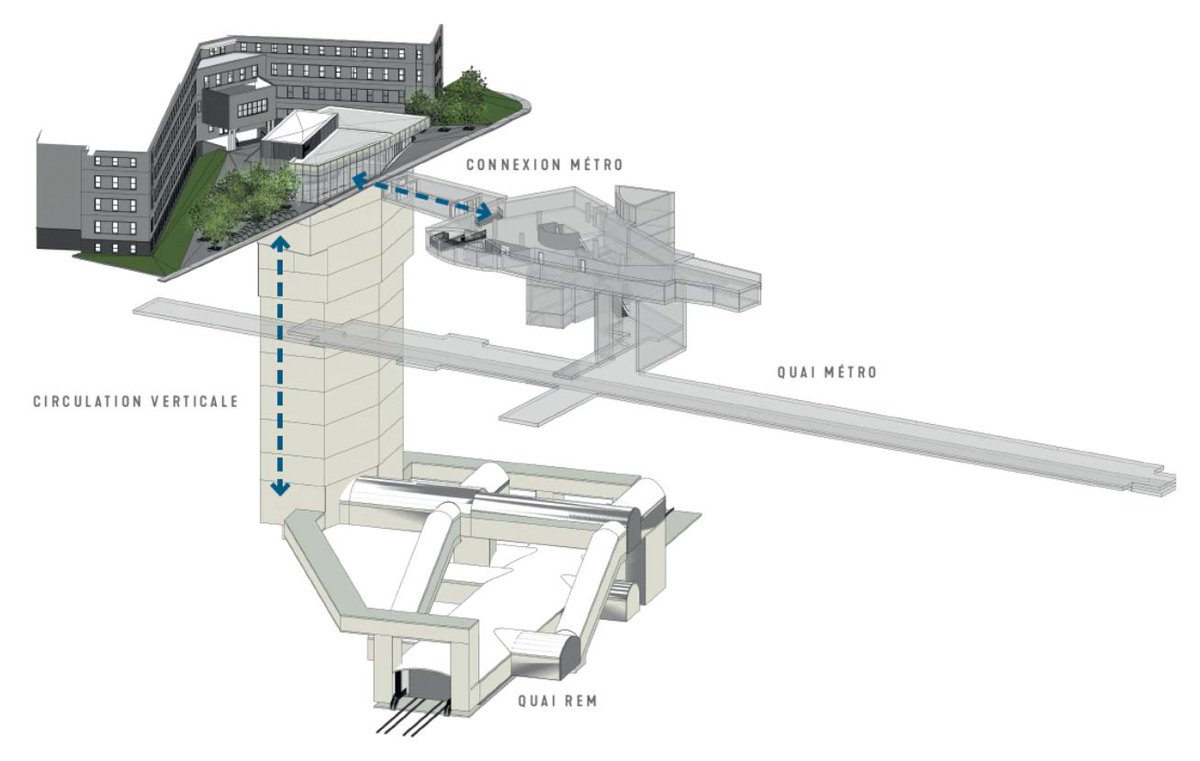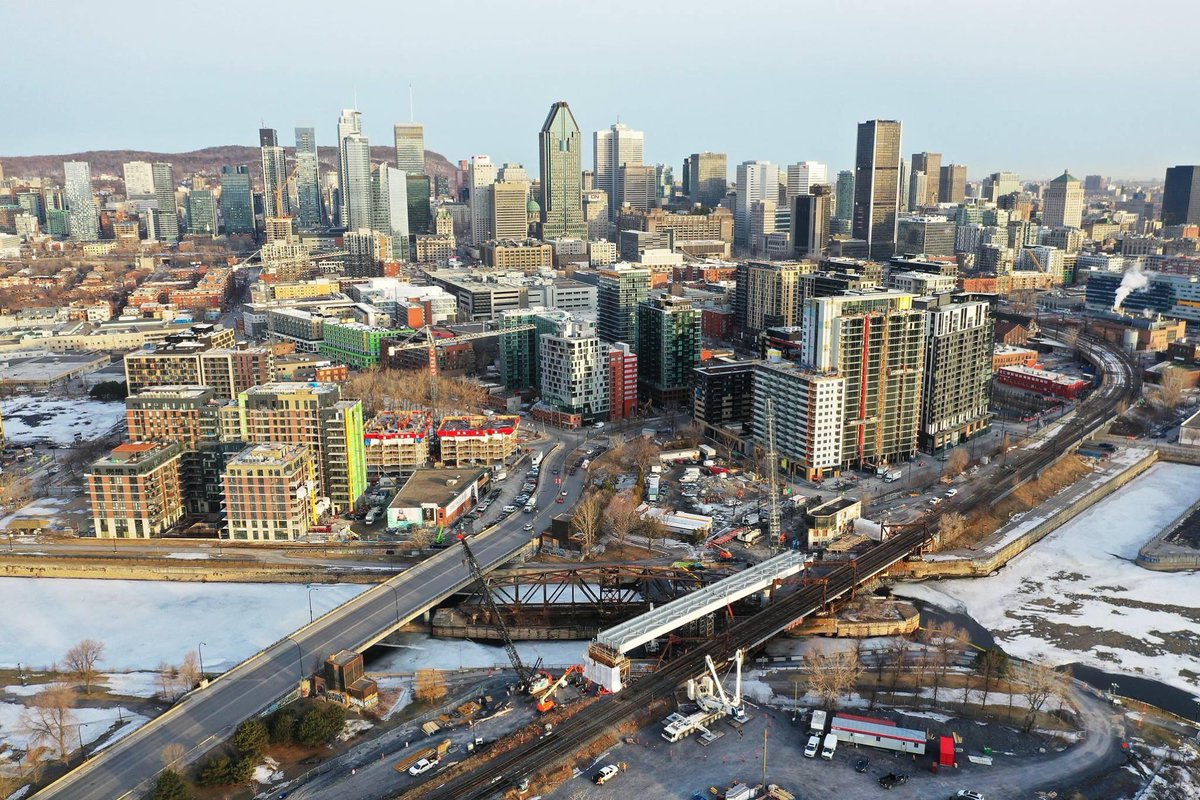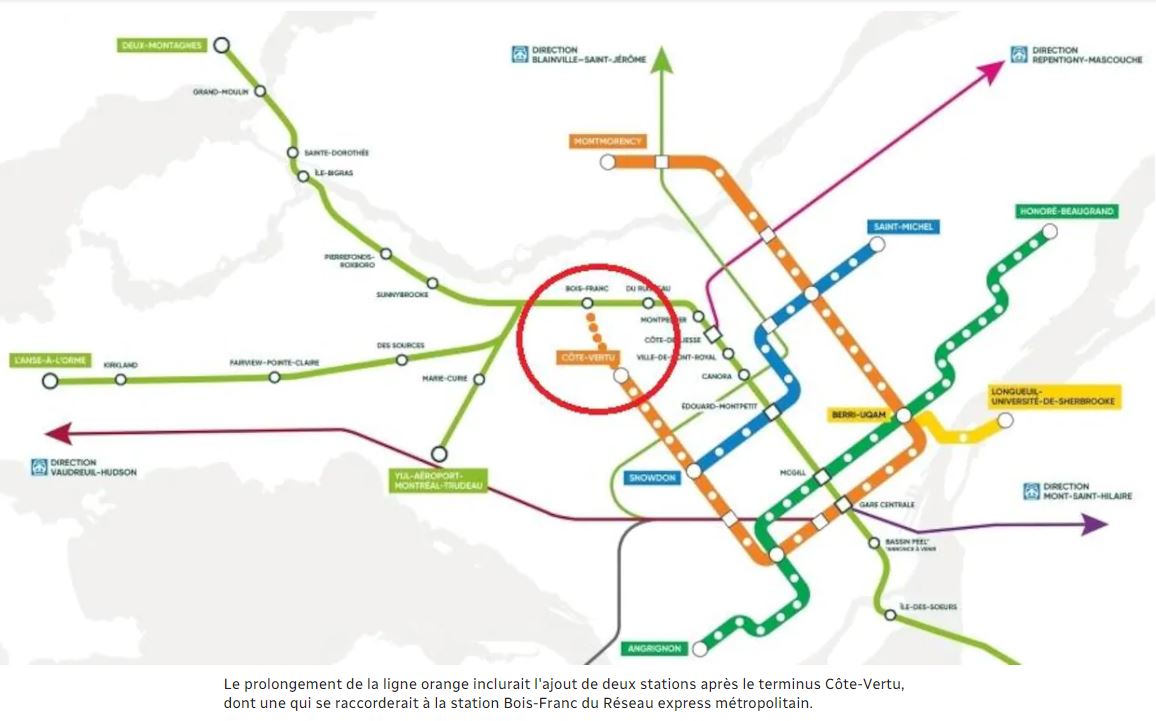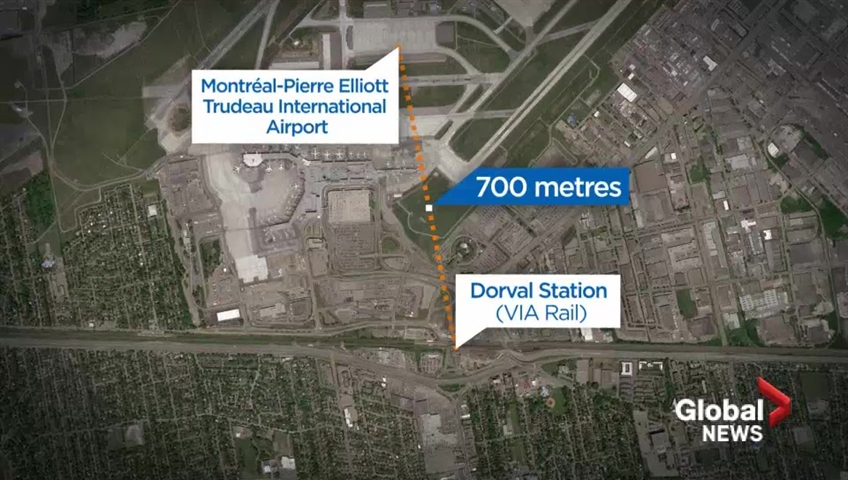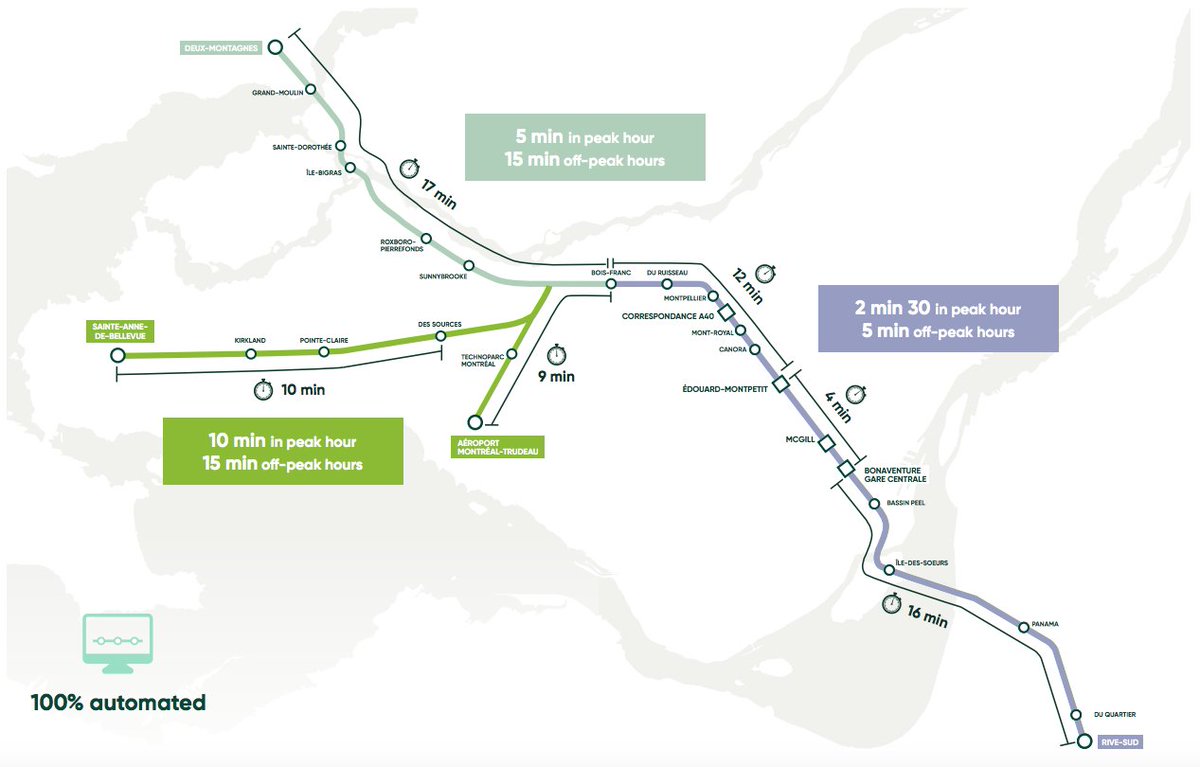1/ A thread about the 67 km, 26 stations REM (Réseau Express Métropolitain) in Montréal, under construction since fall 2018. Quoted at 6,5 bn$, REM is currently one of the biggest transit projects in N-A. A thread about the reasons why I give the shiny REM only a B- mark.
2/ First, REM is a strange beast: technically, is a state-of-the-art automated light metro (train 76.2 m long, 2,94 m wide, 100 km/h top speed); but geographically, is a regional rail, with widely spaced stations reaching far out in the greater metropolitan region (CMM).
3/ Urban planning-wise, the project has been widely criticized as the “train de l’étalement urbain”, a train called urban sprawl. https://www.ledevoir.com/opinion/idees/477725/prendre-le-train-de-l-etalement-urbain">https://www.ledevoir.com/opinion/i...
4/ But, this is not its main flaw. If properly planned, the REM can be the tool for a concentrated redistribution of growth and density outside the core (the thing people call TOD and that exists since trains existed, but with different names). It is already doing that, somehow
5/ Technology-wise, the main problem of REM is its total incompatibility with existing suburban rail. If automation and segregations are both good for frequency and reliability, they are bad for a technological integration within a future region-wide RER-like rail system.
6/ Because of that choice, the recently completed Mascouche commuter train (all-in-all a bad commuter style rail) will loose its direct access to the city core. Mont Royal tunnel, a century old natural city-trunk tunnel is now lost to mixed rail use.
7/ But the worst aspect of the whole story is not technical, but financial. The REM is primarily an investment vehicle for CDPQ Infra, a subsidiary of the “Caisse de Dépôt et Placement du Québec”, the public mammoth fund that manages 340bn$ worth in Quebecers’ retirement savings
8/ REM is not being built as a concession, nor other kind of PPP formulas where the ownership is returned to the public after a given time. CDPQ Infra will own the infrastructure forever, while using large amount of public funds to build it, both in form of shares and grants.
9/ As a mutual investment fund, the main problem for the “Caisse” is to get an 8-9% return on investment on its share. Thus, while only owning 50% of the capital (the rest is equally divided b/w federal and provincial govts), it will have a priority recovery clause on dividends.
10/ Someone just labelled that arrangement as a sort of autonomous “Barony” within the newly established greater Montréal transit system, complemented by a financial version of the medieval “ius primae noctis” over profit shares.
11/ All the bad decisions around REM implementation derive form this original sin. Important public infrastructure assets, i.e. the Mount Royal tunnel and the whole Deux-Montagnes commuter line were sold for a bargain (and FOR GOOD) to a de facto private company.
12/ The outsourcing of planning, designing, and managing of a major transit project to an institution whose main goal is to maximize ROI produced odd decisions. The first 2016 proposal skipped two key connections with the existing Métro network deemed to costly to build.
13/ Fortunately, after political pressures (and a robust injection of even more public money) Edourd-Montpetit and McGill stations are now under construction in the existing Mt-Royal tunnel. The first one, will be the second deepest in N-A at -70m below the ground
14/ It is still unknown where, when or even if another key station, situated in the central rapidly transforming area of Griffintown, will be built. And that despite the pressures of the city government.
15/ No brainers like the two stop west extension of the Orange line to connect with the REM at Bois-Franc or the one-stop extension of the REM airport branch to the Dorval Via-Rail station, are considered only now. That is what you get with outsourced planning.
16/ Fare integration, another major goal of the reform of the regional transit governance that established the “Autorité Régionale de Transport” in 2016, is stalling because of the difficulty in integrating one more (revenue obsessed) agency to the scheme: https://www.artm.quebec/refonte-tarifaire/">https://www.artm.quebec/refonte-t...
17/ The overall management of the project was even more opaque then the standard Masonic-style management of public works in Québec. The inevitable 2 years closure of Deux-Montagnes line was first kept “secret", then downplayed, then mishandled https://twitter.com/RAILMag/status/1259082021030297600?s=20">https://twitter.com/RAILMag/s...
18/ To finish in a very Canadian-style sandwich evaluation (good-bad-good), there are indeed some positive points, as despite its flaws the project will bring many advantages to the region-wide transit system.
20/ When finished, the REM will offer an unprecedented frequent, fast,reliable, 7 days a week, 20 h/day access to a much larger area of the CMM.
21/ The choice of many mayors to limit park-n-ride in favour of feeder buses around many suburban stations goes in the right direction. It can be pushed even further with complete fare integration, that is (hopefully) in the pipeline https://youtu.be/zOf5AUmG950 ">https://youtu.be/zOf5AUmG9...
21/ There are many more aspects I didn& #39;t touch here. But the original sin of the financical structure and the derived planning flaws are the reasons I give REM a B- note : good intentions (regional frequent transit), but poorly executed

 Read on Twitter
Read on Twitter